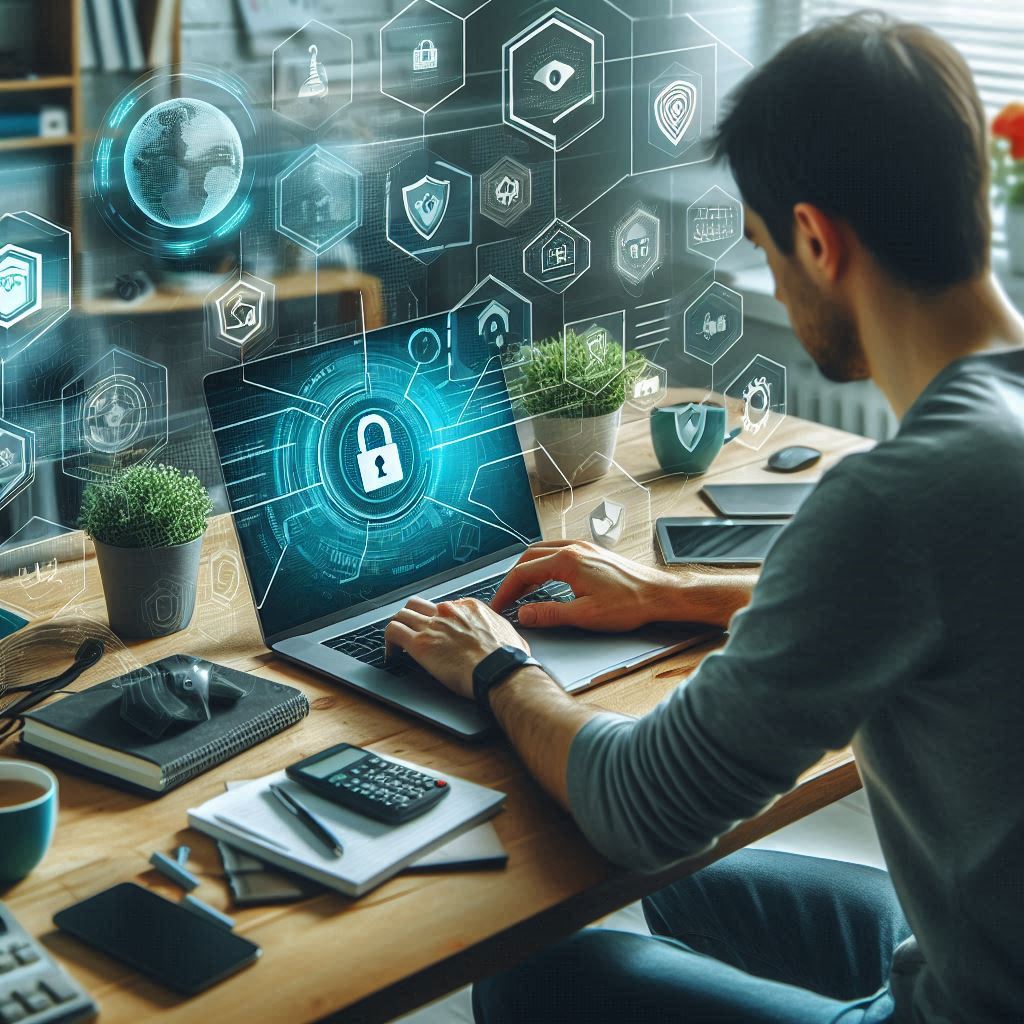10 Cybersecurity Tips to Protect Your Online Identity. Online identity theft has become increasingly common in today’s digital world. Hackers are continuously finding new ways to gain unauthorized access to personal information and sensitive data.
To protect yourself from these attacks, it’s important to take measures to secure your online identity. In this blog post, we will provide 10 cybersecurity tips to help protect your online identity.
Here is blog on 10 Cybersecurity Tips to Protect Your Online Identity
1.Use Strong Passwords:
- A strong password is a combination of uppercase and lowercase letters, numbers, and special characters.
- Don’t use easily guessable passwords such as your date of birth, name, or pet’s name.
- Instead, use a password manager to generate and store complex passwords.
2.Enable Two-Factor Authentication:
- Two-factor authentication (2FA) adds an extra layer of security to your online accounts.
- It requires a second form of identification such as a fingerprint, facial recognition, or a code sent to your phone.
3.Keep Your Software Up to Date:
- Keep all your software and operating systems up to date with the latest security patches.
- This includes your antivirus software, web browser, and any other software you use on a regular basis.
4.Be Careful What You Click:
- Avoid clicking on links or downloading attachments from suspicious emails or websites.
- Phishing scams are a common tactic used by cybercriminals to steal personal information.
5.Use a VPN:
- A virtual private network (VPN) encrypts your internet connection and provides a secure connection between your device and the internet.
- This protects your online activity from prying eyes, especially when using public Wi-Fi.
6.Be Wary of Public Wi-Fi:
- Public Wi-Fi networks are not secure, and cybercriminals can easily intercept your online activity.
- Avoid using public Wi-Fi networks to access sensitive information such as your bank account or credit card details.
7.Use a Firewall:
- A firewall blocks unauthorized access to your computer or network.
- Enable your firewall to protect your computer from unauthorized access.
8.Don’t Overshare on social media:
- Be careful about what you share on social media.
- Don’t share personal information such as your date of birth, address, or phone number.
9.Back Up Your Data:
- Regularly back up your important data and store it in a secure location.
- This will help protect your data in case your computer is hacked or stolen.
10.Use a Secure Browser:
- Use a web browser that is designed to protect your privacy and security.
- Some examples of secure browsers include Mozilla Firefox and Google Chrome.
Must Read: 5 Amazing facts of Software Engineering
Now here is about Cybersecurity how Cybersecurity helps you.
And here are some types of cyber threats that individuals and organizations need to protect against.
- Cybersecurity refers to the practice of protecting digital devices, networks, and sensitive information from unauthorized access, theft, or damage.
- The goal of cybersecurity is to prevent cyberattacks and to ensure that individuals and organizations can use digital devices and networks with confidence.
- Cybersecurity is a constantly evolving field, as hackers are continually developing new techniques to breach security measures.
- Cybersecurity experts use a variety of tools and techniques to protect against cyber threats, including firewalls, antivirus software, intrusion detection systems, encryption, and vulnerability assessments.
There are several types of cyber threats that individuals and organizations need to protect against. These include:
Malware:
- Malware is software that is designed to harm or steal information from digital devices.
- Malware can be delivered through email attachments, infected websites, or downloaded software.
Phishing:
- Phishing is a social engineering technique that involves tricking individuals into providing sensitive information.
- Such as passwords or credit card numbers through a fake website or email.
Ransomware:
- Ransomware is a type of malware that encrypts files on a computer
- And demands a ransom payment to restore access.
Denial of Service (DoS) Attacks:
- DoS attacks involve overwhelming a network or server with traffic to render it unusable.
Advanced Persistent Threats (APTs):
- APTs are sophisticated, targeted attacks that are designed to steal sensitive information or disrupt operations.
Protecting your online identity is essential in today’s digital world. Cyber-attacks and identity theft are becoming more sophisticated, and it’s essential to take proactive measures to secure your personal information and sensitive data. By following the ten cybersecurity tips mentioned in this article, you can help protect yourself from cyber threats and keep your online identity safe.
Using strong passwords, enabling two-factor authentication, keeping your software up to date, being cautious of suspicious links, using a VPN, avoiding public Wi-Fi, using a firewall, being mindful of oversharing on social media, backing up your data, and using a secure browser are all important steps to take to protect your online identity.
Remember, cybersecurity is an ongoing effort, and it’s important to stay informed about the latest cyber threats and to take proactive measures to protect yourself and your information. Stay vigilant, stay secure, and keep your online identity safe.



